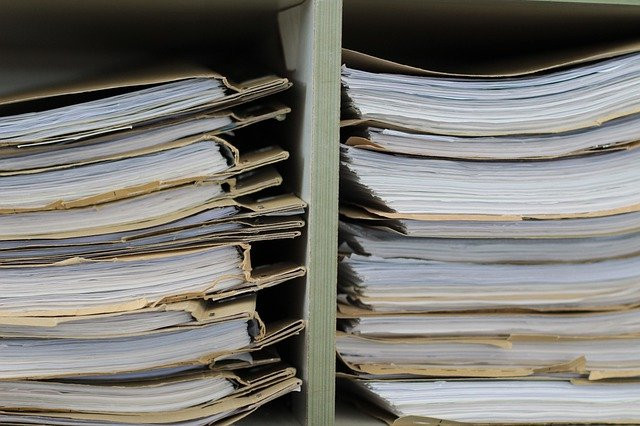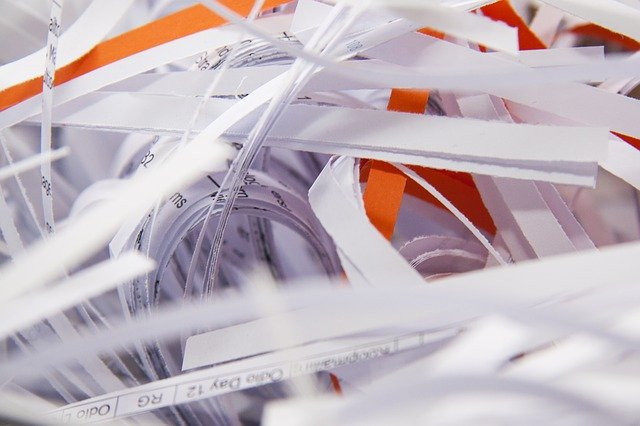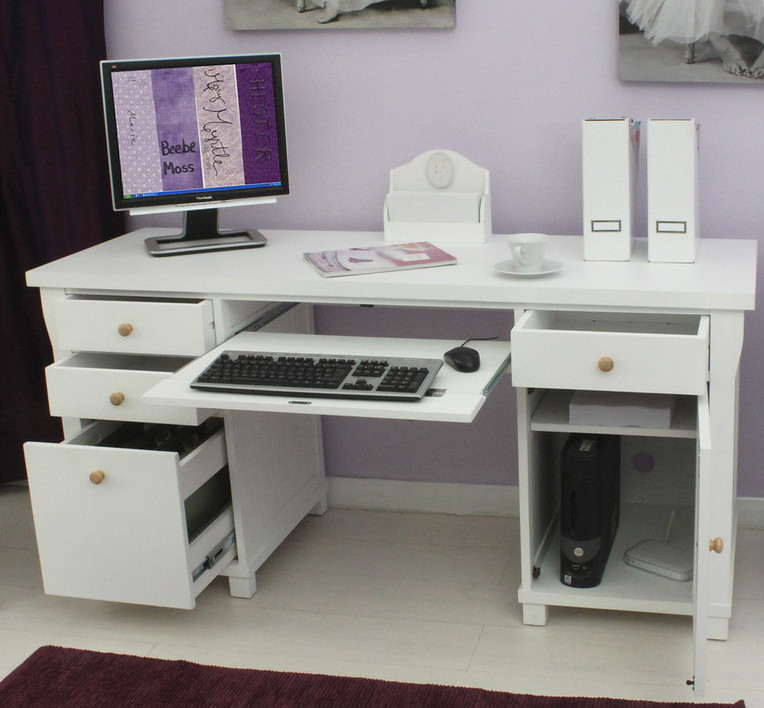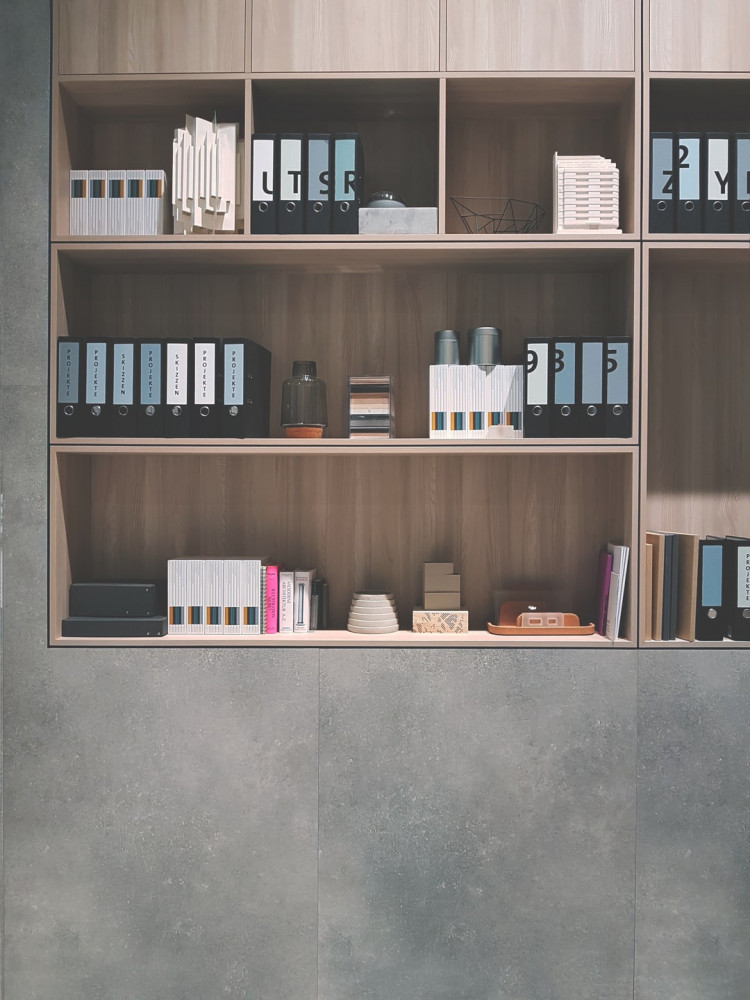Learning how to organize paperwork is probably not the most exciting thing that people wish to learn. However, the benefits of learning how to organize office files would simply blow your mind if you thought about it. Imagine having a clean and organized office where you can find documents or important records with a click of your fingers!
If you’re want to know how to organize years of paperwork or how to organize paperwork on your desk, then you’re in luck. I disclose expert tips and tricks so that you can put law and order to your home and office files in an easy yet effective method. If you’re worried about the retention period for documents, that’s covered too!
By following this proven technique, I have saved myself hours of scavenging for vital documents, such as passports and birth certificates. I have prevented a significant amount of stress and frustration panicking about where files are as I run out the door or to a meeting.
I have also massively cut redundant wasted time which unorganized people endure on a regular basis.
How?
By simply following 9 proven steps that I share with you today!
The best part is, it’s all laid out here in a free and easy-to-follow guide. Let’s get started!
How to organize paperwork
1. Gather all the documents together
2. Categorize paperwork
3. Discard unnecessary paperwork
4. Go digital
5. Arrange files
6. Determine storage requirements
7. Label items
8. Set an expiration date
9. Repeat process

Gather all the documents together
Route through your drawers, storage cabinets and the mountain of paperwork that’s piling up on your desk and collate all the documents to one location.
If you work as part of a department or team, this could turn into a group effort. It makes sense to involve all the necessary people so that all the paperwork is collated, and you can end up with a complete filing system that’s not lacking any paperwork.
Categorize paperwork
Dispose: Paperwork that doesn’t have any confidential information on it, e.g., magazines, books
Shred: Documents with confidential information on it, e.g., utility bills, bank statements, medical certs
Archive: Items that need to be retained, e.g., receipts, wills, contracts, medical records
Scan: Paperwork that should be retained but a soft copy will suffice, e.g., receipts, letters
Return: Records that belong to another department or member of your house, e.g., academic records for your children, training records for a colleague.

Discard unnecessary paperwork
We’re all culprits of holding onto miscellaneous bills and receipts for the “just in case” scenario. Sound familiar?
It’s likely that much of this is now redundant and can be discarded. Take all the documents from the discard pile and either bin them or shred them. When discarding of items, consider how long they should be kept for. This will help eliminate a messy and dusty desk.
How long should I keep important documentation?
This information is determined by how frequently you receive an updated version of the form along with the importance of the document. Tax information has a recommended retention period of 3 – 7 years. Use the below table which features examples of common documents and how long they should be retained for.
|
Type of document |
Duration to keep document |
|
Utility bills |
1 month |
|
Contracts renewed annually |
1 year |
|
Pay stubs |
1 year |
|
Annual bank statements |
1 year |
|
Supporting tax returns documents |
3 – 7 years |
|
Tax returns |
Permanently |
|
Large financial records |
Permanently |
Go digital
Use a scanner to save soft copies of documents so that the hard copies can be disposed of. There are even apps on your phone that you can use to take a photo of the document and make a scan of it – it couldn’t be easier!
If you have subscriptions or bills that come to you in hard copy, consider receiving virtual bills or magazines instead. This will cut down on the amount of paperwork you need to manage.
Most companies are pushing customers to go paperless and pay for their bills via an online account. Some companies even offer discounts for ditching the paper. Plus, it’s also better for the environment!
Unsubscribe from books, catalogs and updates that you receive in hard copy.
Tip: Place a ‘no junk mail’ sign on your letterbox to deter people posting rubbish through your mailbox. I did this and I was surprised how much less junk I was receiving!
In addition, it also saves you the hassle and cost of disposing of it.

Arrange files
Now that you have a complete set of essential files, it’s time to organize them based on categories that make sense. Below are examples of a filing system for a home, and also included is a filing system for office paperwork.
Office paperwork:
Bills: Utility bills, subscriptions, vendor purchases, rent, license fees
Contracts: Service level agreements, phone contracts
Employee records: Employment contract, references, resume, performance review
Financial: Bank statements, credit card details, income, expenses
Fixed assets: Fixed asset register, balance sheets
Insurance information: General liability insurance, professional liability insurance, commercial property insurance, car insurance
Marketing information: Graphics, promotional materials, leaflets
Tax documents: pension, tax returns
Training records: Employee training records, vendor training records
Home filing system categories:
Car documents: Tax, insurance, service history
Contracts: Internet, electricity, TV subscriptions
Educational records: Exam results per person, certificates, application forms
Employment documentation: Employment contract, employee handbook, references, CV
Financial: Bank statements, credit card details, bills, loans, mortgage, house insurance, life insurance, investments, stocks, 401k, pension, tax returns
Instruction manuals: TV, kitchen appliances, technology, toys
Lifestyle: Diets, books, recipes, maps, hobbies, holidays, travel, phone book, photo albums
Medical records: Medical records per person, medical expenses, health insurance, prescriptions
Essential records: Passport, birth certificates, marriage certificates, divorce records, death certificates, wills
Pet information: Passport, vet receipts, pet insurance
Tip: Avoid using a miscellaneous heading as this area can grow rapidly and it will become a section of unfiltered documents that’s difficult to navigate. Here are some guidelines for labelling: How to organize your desk drawers – 12 fool proof steps
Determine storage requirements
With everything now arranged into neat sections, it’s time to identify storage locations. If you already have sufficient storage, then it’s simply a matter of arranging everything into cabinets or boxes.
If you don’t have adequate storage, then select some storage boxes or cabinets that suit your needs and also fit into the environment that they are going to be positioned.
File boxes are a neat and portable way of storing files upright. These are available in an array of materials, such as plastic or metal.
Tip: Some robust storage cabinets have fire-proof ratings and secure locking features which may be necessary for saving essential documents or precious records from destruction or theft.

Label items
Regardless of whether you opt to store documents in binders or hanging files in a drawer or box, all items should be labeled. Simply relying on memory to know that a box contains a particular category of documents is unreliable.
Plus, if the knowledge is only in your head, it makes it difficult for others to find what they are looking for, unless they’re a mind reader or something…
Colour coding is a simple visual technique that can be employed to make organizing and finding documents easier. Invest in a block of multicolored tabs and for each category, assign a tab colour. This way, when you look into a filing cabinet and see a block of colour, you can associate that colour with a specific category and navigate to it much faster.
Choose file folders which have the tabs attached already. However, if the file folders that you have already don’t have this design, here’s a quick hack to ensure that they are easier to read.
If you are applying the tabs manually, ensure that they are spread out across the file folders so that when you are trying to read them, they are not overlapping on each other.
The easiest ways to do this is to sort them in order, lie them flat on each other and then apply the first label towards the very left, then move the label down for the next folder, so you can read it all.
Tip: Colour coding by association makes the process of navigating through folders easier. For instance, if you have a Christmas folder, it could be colored or labeled red or green since many people associate these colours with that time of year.

Set an expiration date
Establishing a record retention period for each item. Identifying how long you need to keep paperwork is easier for some files. For instance, every year you will receive a new insurance certificate, hence the old one can be thrown away. Other items, such as medical records, will need further consideration.
There are documents that won’t have a set expiry date per se. Your contract of employment should be retained until you cease employment there.
Tip: Check if your company has a record retention policy. This will establish clear timelines for holding onto records.
Repeat process
Over time, the process of organizing and sorting through your files will need to be repeated as items expire and paperwork builds up. When you see your cabinets filling up, it’s time to repeat the steps again and put some order to the files.
This bears the question; how often should you organize your paperwork?
How often you should organize your files will depend on how much paperwork you process throughout the year. For paperwork at home, this could last 6 – 12 months before a review is required. However, a busy office may need to organize their paperwork every 3 – 6 months to ensure that they are not left with a stockpile at the end of the year.
The frequency at which you organize your desk files can be extended if you maintain it. Performing regular filing and archiving every week or even every month will help the filing system to stay organized. The more frequently that you complete this, the less time that it should take you each time!
Establish a rule to ensure that all documents are returned to their place at the end of the day. This helps to maintain the organized system and sets you up for success the next time you go looking for a file.
Tip: Adopt an in-out approach to records that expire. When you receive an updated certificate or contract, remove the old one before filing your new record. This eliminates expiring documents taking up space.
Conclusion
While it may feel like monotonous work, dedicating a short amount of time to arranging your filing system will pay off in terms of efficiency, plus the risk of losing or misplacing documents is minimized.

Now that you have organized your files, why not put some manners on your desk too? I shared the proven technique that I followed, and it had the added advantage of reducing my anxiety levels and boosting my efficiency too! If you’re hungry for more hacks and tips, or you want to catapult your productivity to new heights, then go check out How to organize my office desk – 10 easy steps
My goal with this website is to help you on all matters related your home office and your work area. With that in mind, if you have any queries or comments on the above, please drop them in the box below. I’d love to hear them.
Sources
https://www.thespruce.com/organizing-a-home-filing-system-2648257
https://www.thebalancesmb.com/master-your-filing-system-2947145
https://www.talentedladiesclub.com/articles/how-to-organize-your-household-paperwork/
